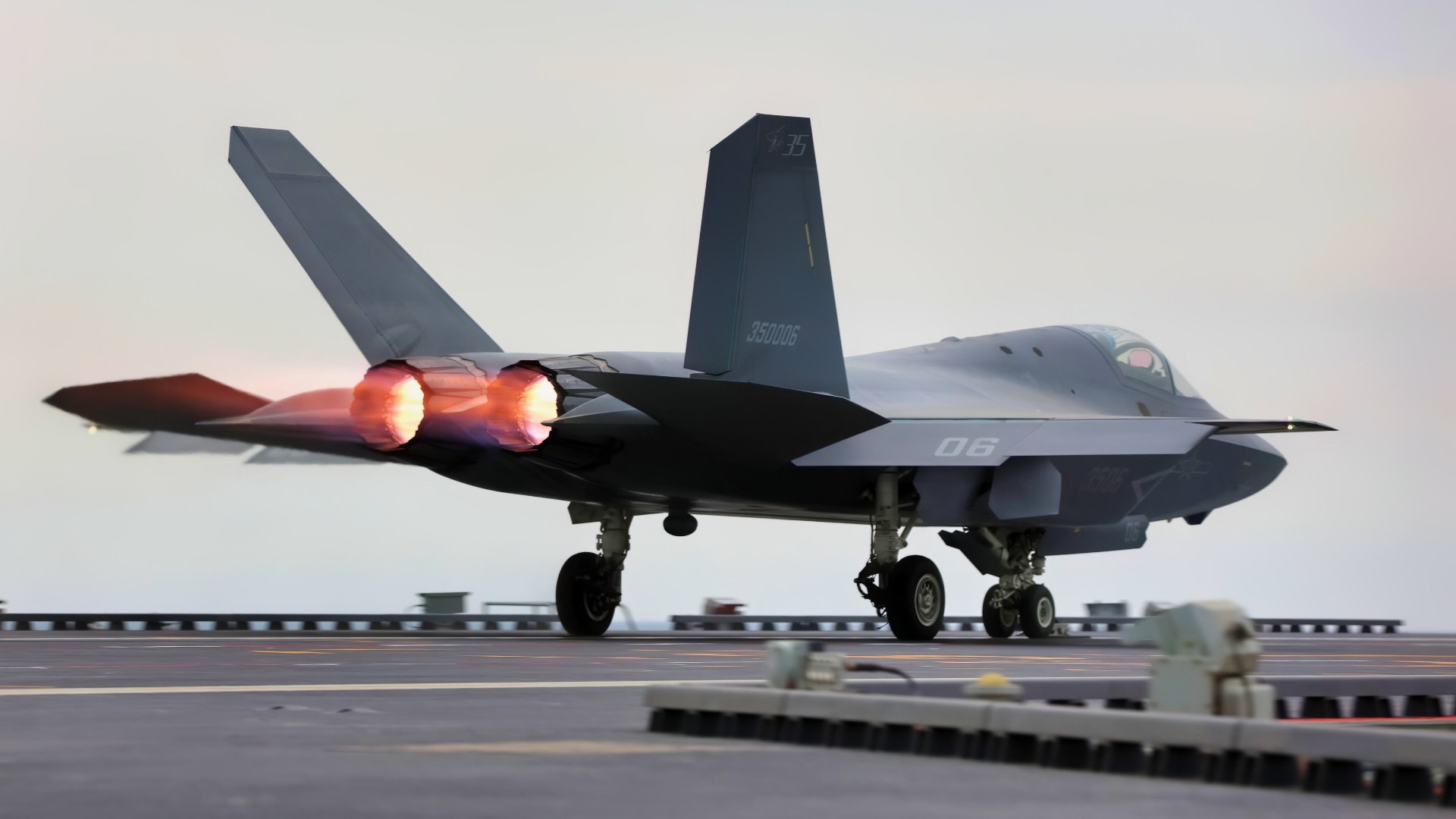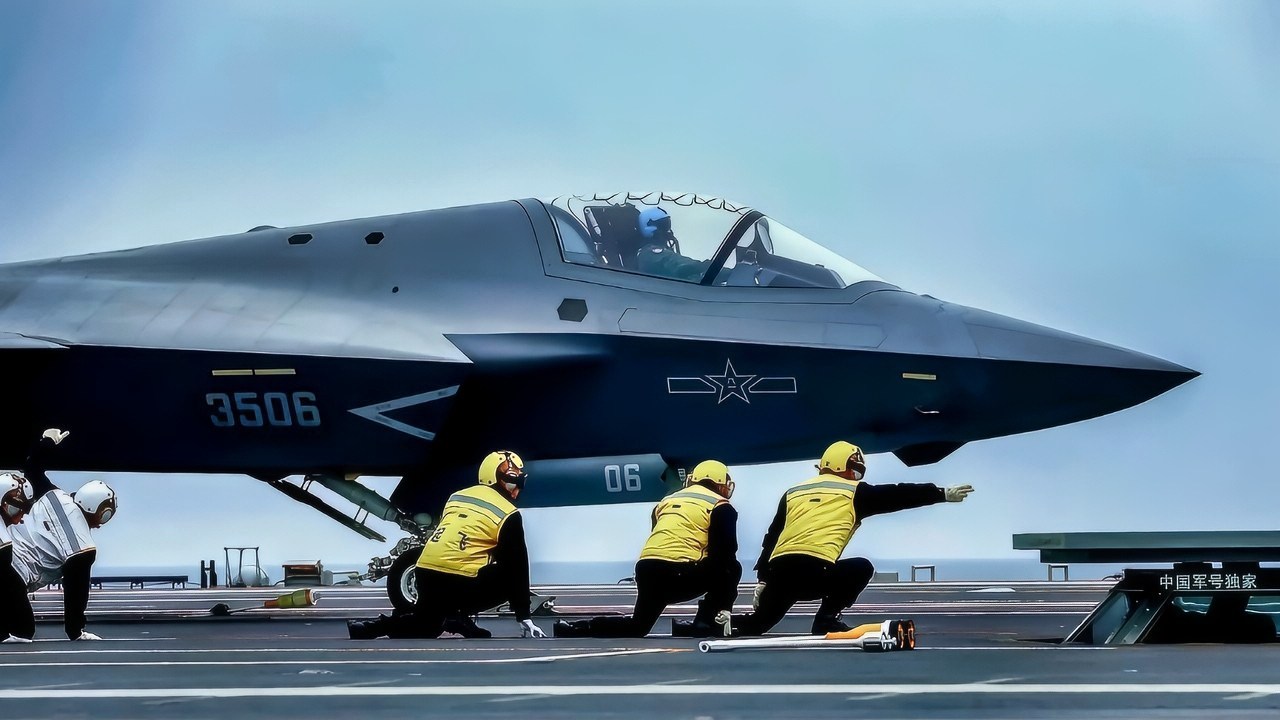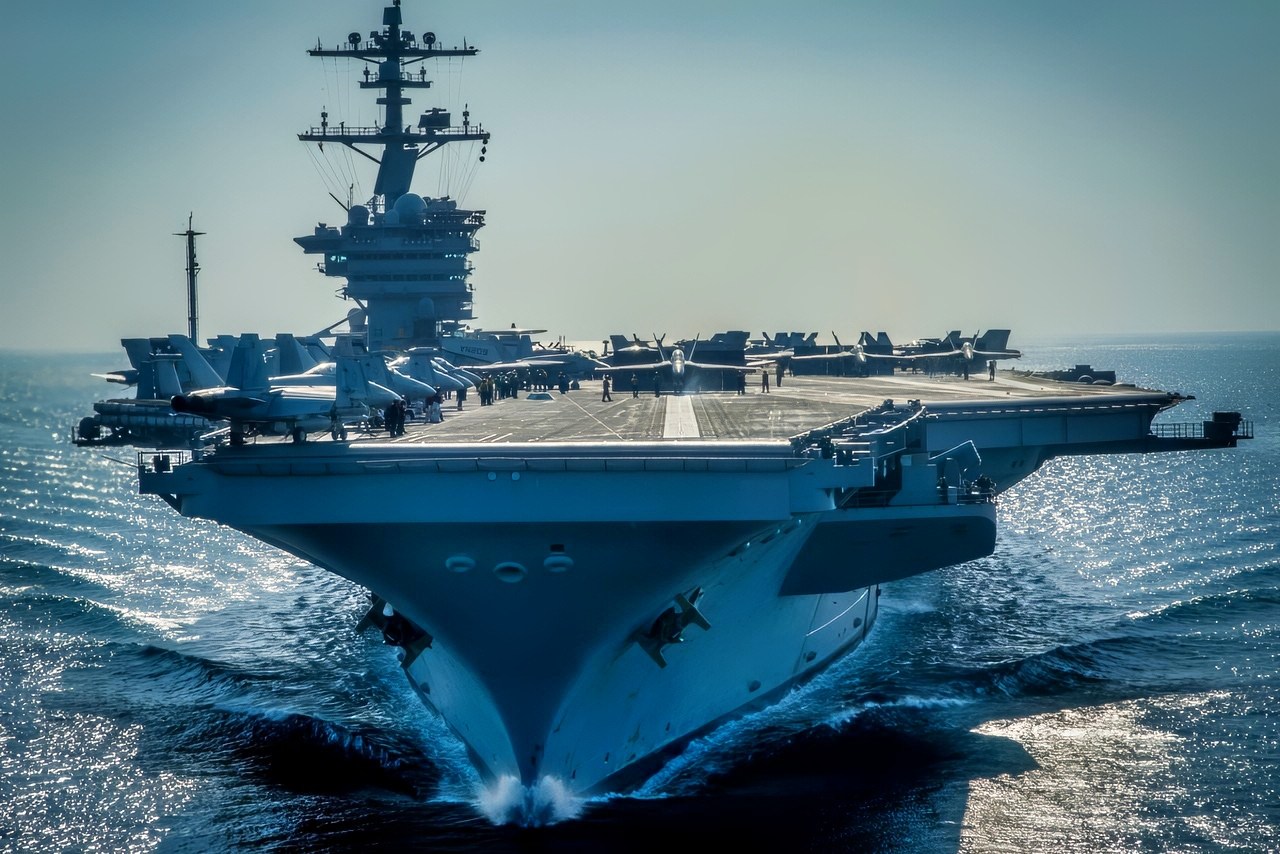Key Points and Summary – China’s construction of a fourth, nuclear-powered aircraft carrier signals a monumental leap in its strategic ambitions.
-Nuclear power will grant its navy a true “Blue Water” global reach, enabling deployments far beyond Asia, from the Western Hemisphere to the Arctic and Middle East.

China J-35 Fighter on Aircraft Carrier. Image Credit: Chinese Navy.
-Domestically, a four-carrier fleet allows China to maintain a constant three-carrier presence in the Indo-Pacific, solidifying its regional dominance.
-Critically, the new carrier strengthens China’s anti-access/area denial (A2/AD) strategy, aiming to deter U.S. intervention in a potential conflict over Taiwan while also serving as a powerful symbol of national pride and technological prowess.
Why China Wants a Nuclear-Powered Aircraft Carrier
China has begun construction on its fourth Type 004 aircraft carrier, which is expected to be nuclear-powered, aiming to rival the U.S. Navy’s Ford-class flat-top program.
It will feature electromagnetic catapults, and the carrier wing will be the dominant feature. But why go through all the time, money, and effort to build a nuclear-powered carrier that could someday be the biggest flat-top on earth?
China seeks to establish an additional carrier strike group as the premier military force in its region – one that can navigate the First and Second Island Chains and safeguard its national interests.
The carrier and its escort ships could steam from Australia to Japan with no problem.
This would allow the People’s Liberation Army Navy (PLAN) to keep three carriers in the water at all times and have one in maintenance.
Three is enough to overawe any adversary in the Indo-Pacific aside from the United States.
But the Americans would not be happy having to face one more flotilla of warships in East Asia, and its critical military assets in Guam would be in danger.
Nuclear-Powered Aircraft Carriers in 2 Words: Big Ambitions
Having a nuclear-powered aircraft carrier would grant China a full-fledged “Blue Water” Navy. It could patrol the Western Hemisphere and protect allies like Cuba and Venezuela.
This is a fraught time for Venezuela as the U.S. Navy is destroying boats filled with narcotics and President Donald Trump has ordered the CIA to conduct covert operations against Venezuela’s regime – perhaps to overthrow Nicolas Maduro.
Trump also wants the United States to exert control over the entire Western Hemisphere, particularly the Panama Canal.
Sending an Important Asset to Help Russia
China, with its nuclear-powered aircraft carrier, could also come to Russia’s aid.

China J-35 Fighter. Image Credit: Chinese Navy/PLAN.

J-35 Factory in China. Image Credit: CCTV Screenshot.
Vladimir Putin and Xi Jinping are strong allies, and China wants to help Russia win the war in Ukraine.
China could plausibly sail the nuclear-powered carrier to the Black Sea and launch warplanes to attack Ukraine if needed. This would give Putin many more aircraft to help his war effort.
Don’t Forget the Arctic
The PLAN could also deploy the nuclear-powered carrier to certain parts of the Arctic for enhanced power projection in that region.
China aims to become a more significant player in the Arctic, and flying its flag there would help achieve long-term strategic objectives.
The Middle East and the Mediterranean Are Within Reach
China could send its nuclear-powered flat-top to the Middle East and the Mediterranean. China aims to maintain its energy supply from the Middle East.
Xi would also like to assist the Iranians in their export of hydrocarbons and bolster their effort against Israel.
The Chinese have a military base in Djibouti in the Horn of Africa that can offer resupply and other logistical support to the Chinese carrier.
The General Public Would Love the New Aircraft Carrier
The PLAN could circumnavigate the globe. This would be a huge public relations win for the Chinese people. Citizens are increasingly nationalistic and patriotic when it comes to weapons systems.
When the J-10C fighter, flown by Pakistan, achieved such success against Indian fighters during a skirmish this year between the two countries, the Chinese people were overjoyed. The nuclear-powered carrier would be a symbol of national pride and prestige.
A nuclear-powered aircraft carrier would also fall in line with China’s yearning for more wealth and power.
The airline would demonstrate that the People’s Republic is wealthy enough to produce such an expensive ship and that it would be able to project power globally.
The “Made in China 2025” strategy aims to enhance industrial capacity to produce more goods and services in key sectors, including energy, robotics, electric vehicles, artificial intelligence, factory automation, and semiconductors.
Made in China 2025 can also be extended to producing primary weapons systems, and a nuclear-powered carrier would fall under this industrial strategy.
I have discussed how China could go on the offensive with its nuclear-powered carrier. But the main objective may be defense. This defensive posture, which includes anti-access/area denial, is a vital gambit to keep the United States at bay and out of the First and Second Island Chains.
The PLAN wants to prevent the Americans from getting involved during a Chinese attack on Taiwan. A nuclear-powered carrier can keep the U.S. Navy bottled up during the annexation effort against Taiwan. There would be “no-go” parts of the sea, including the Taiwan Strait, that the PLAN could keep the U.S. Navy from entering with that extra carrier.
The nuclear-powered beast could also be used to deter Japan and South Korea from intervening in a China-Taiwan conflict. China would need an extra carrier if it decided to blockade and quarantine Taiwan – a first step in an invasion scenario. It would be easy to shut down and surround Taiwan with all four carriers in the water.
Then there is the possibility of war on the Korean peninsula. China could come to the rescue of North Korea if the South Koreans and the Americans get involved in a conflict there with the DPRK. The PLAN would have another asset in the water to deter South Korea and the United States from attacking Kim Jong-un’s forces.
The Chinese also want to keep sea lanes open for the import of oil and other resources through the strategic Strait of Malacca. One extra aircraft carrier could defeat a potential American blockade of the critical strait where so much commerce flows.
With the nuclear-powered carrier, China is much more powerful in offense and defense. The PLAN would dominate its region and prevent U.S. allies, such as Japan, South Korea, and Australia, from disrupting the Taiwan dispute. The carrier would be easily able to protect China’s coastline from an American attack. An extra strike group could also defend China’s territorial claims in the East China Sea. The Indo-Pacific would become Beijing’s playground.
On offense, China could steam throughout the Western Hemisphere, the Arctic, the Black Sea, and the Middle Eas,t helping out allies such as North Korea, Russia, Iran, and Venezuela.
Thus, a nuclear-powered carrier would be a massive instrument of a global “Blue Water” strategy for Xi Jinping. He could protect the country’s wealth and power objectives and bolster the Made in China 2025 doctrine into the 2030s.
Ordinary Chinese citizens would be overjoyed. Xi could take Taiwan by initiating a blockade and subsequently launching an amphibious attack.
The nuclear-powered carrier would significantly strengthen China’s military. Look for China to pull out all the stops while it produces the new flat-top. It will be a dream come true for the Middle Kingdom.
About the Author: Brent M. Eastwood
Brent M. Eastwood, PhD is the author of Don’t Turn Your Back On the World: a Conservative Foreign Policy and Humans, Machines, and Data: Future Trends in Warfare plus two other books. Brent was the founder and CEO of a tech firm that predicted world events using artificial intelligence. He served as a legislative fellow for US Senator Tim Scott and advised the senator on defense and foreign policy issues. He has taught at American University, George Washington University, and George Mason University. Brent is a former US Army Infantry officer. He can be followed on X @BMEastwood.
More Military
The U.S. Army’s Big M10 Booker ‘Light Tank’ Mistake Still Stings
The U.S. Navy Built Two Versions of the Littoral Combat Ship. Both Were a Mess.
The EA-18G Growler Has A Message for the U.S. Navy
Warship Goes Down Below the Waves: Navy F/A-18F Fighter Fires A Stealth Munition










